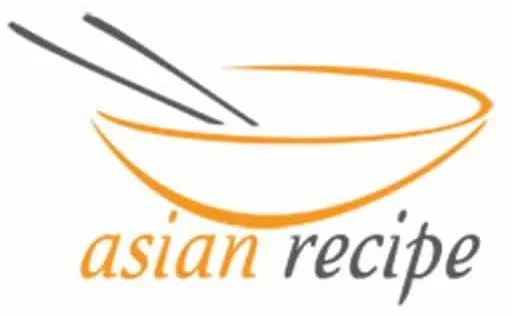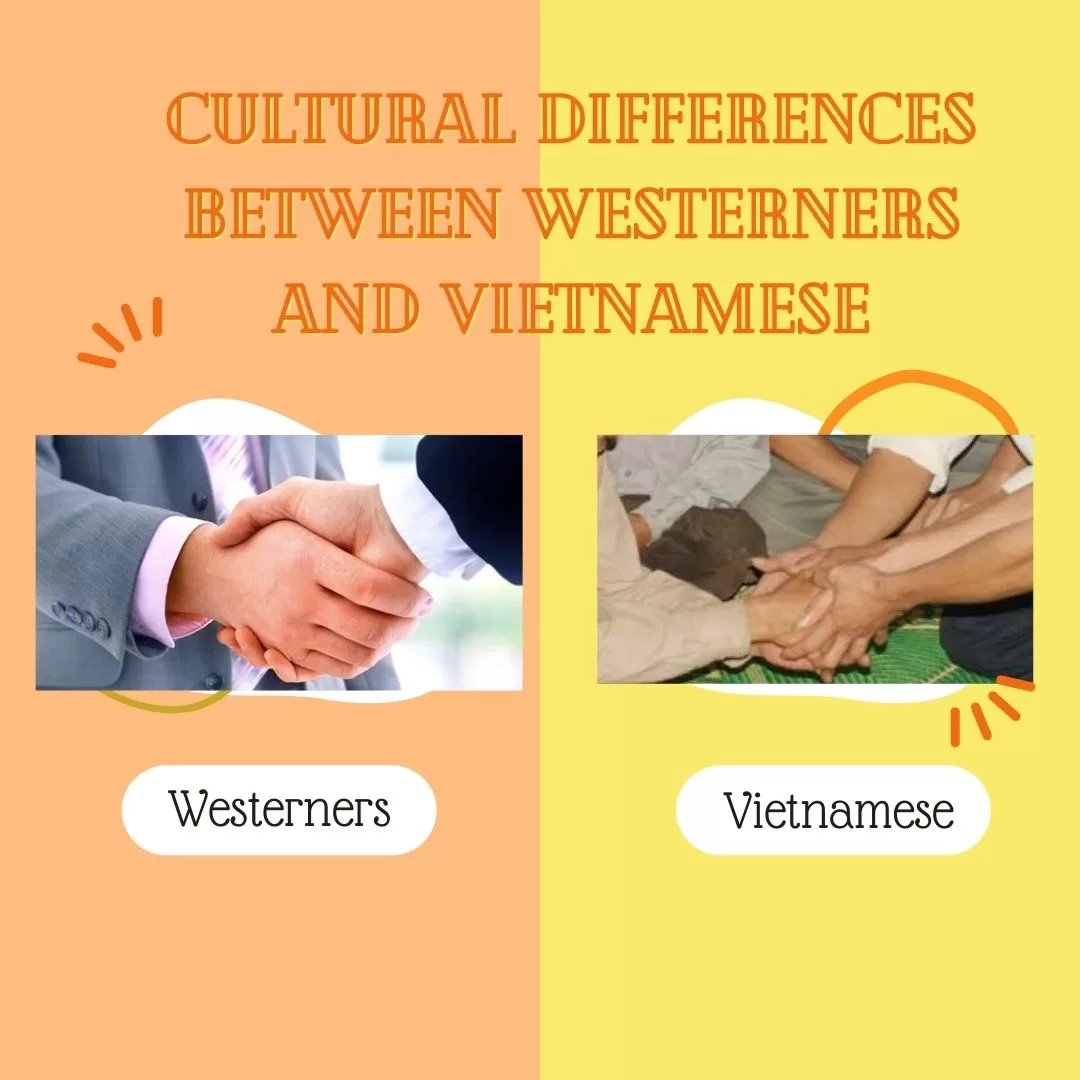Culture is a country’s or the people’s way of life. It simply means, how people do things or accustomed to. Different groups of people have different cultures. The cultures are usually passed on to from generation to generation by way of learning. Cultures includes social forms, beliefs, traits in relation to material, religious and social groups. In this article, let us explore cultural differences between westerners and Vietnamese.
Cultural Differences Between Westerners and Vietnamese
The culture of each country is defined by its way of live, own beliefs and other practices. It is important to know the cultural differences of each country because it how the people living in that country differentiates from the rest. Listed below are some of the biggest difference between Western culture and Vietnamese culture.

Greetings and Small talk
When it comes to greeting someone and creating small talks, Western people usually greet someone by shaking their hands, both male and female can do that since in American culture doing this means there is an equality between the male and females. For some, especially with close friends, greeting can be in a form of kissing the cheeks, while when greeting older people Westerners wave their hands. Also, it is normal in American culture to tap each other at the back. Questions such as “where are you from?” and “what do you do?” are simple questions that most westerners often asked, this is to encourage small talk. Though some meaningless questions such as “how are you” are usually used to avoid any dull moment in a conversation
For Vietnamese, shaking and holding the hands is rarely seen especially with the opposite sex Most of the time, the young ones does not initiate holding and shaking the hands of older people but rather wait for them to do it first. When they do hold, they usually keep it short and by using two hand together with bending the bends. Unlink western culture, women in Vietnamese culture does are not used to holding hands. Kissing on the cheeks is never done, but older people can do that with young individuals and children. Clapping or tapping on is acceptable only with close friends.
Social and Family Life
For Western culture, as soon young ones they reach 18 years of age that’s when they gain their legal independence. This means that they can now go to college even away from home. They are now allowed to live on their own away from their parents when they reach the legal age.
For Vietnamese, family is of great importance in Vietnamese community, the family should stay as close to each other as possible. The children should be responsible for their parents in taking care of them when they grow up. Children should always be respectful of the elders in Vietnamese culture.
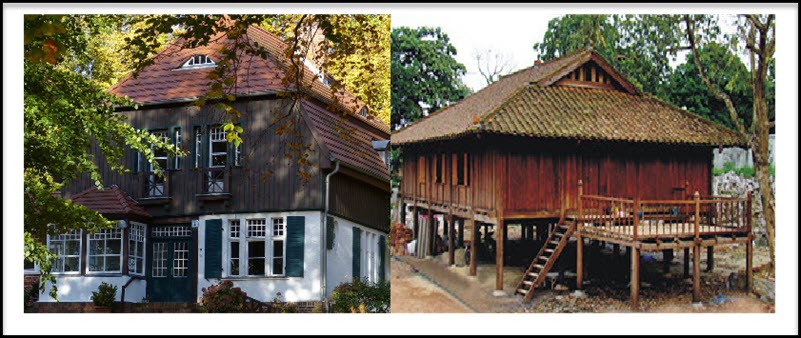
Homes or Housing
In relation to housing or how each culture lived in, for westerners their homes usually have more rooms for bedrooms and for play room. Most of the houses are spacious enough for children to play. The homes are usually made of wood or brick. Westerners do not usually share the same bed especially with the same sex, therefore everybody in the home have their own bed and most of the time children have their own bed in their own bedrooms. Westerners do not usually take an afternoon nap, or what is usually known as “siesta”.
For Vietnamese living on the other hand, houses are relatively small. Most of the homes especially those located at the countryside are usually made of bamboo tree, mud and dry rice plants. But in cities, homes are made of cement or brick. Vietnamese children often play in the streets. Not all Vietnamese have their own beds, in fact they can share the same bed with the same sex. Most of the time, children sleep with their parents and Vietnamese takes an afternoon nap almost every day. In Vietnamese homes, there should be one room designed for an altar and considered to be a sacred room. The homes are usually made of wood or bamboo.
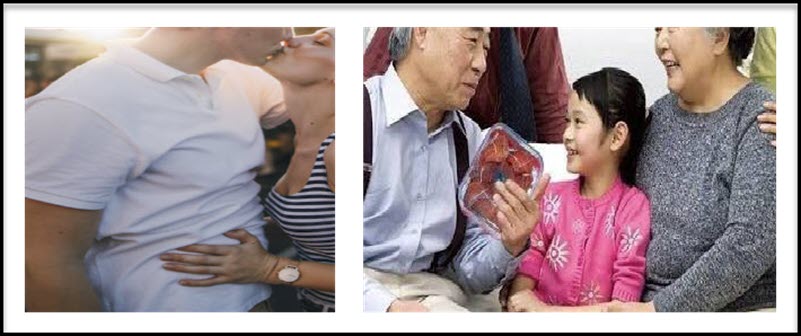
Body Language and Affection
For Western people, both the male and the female can hold hands and kiss each other even in public places. In fact, this is considered to be a common way of Westerners to show their affection with the opposite sex and people in public are fine with it. But, touching is not acceptable of the same sex. With close friends, a kiss on the cheek is acceptable. Married couples can kiss anywhere too even in front of their children. When greeting somebody, Western people greet with joined hands while shaking hands.
For Vietnamese, touching between the opposite sex is acceptable but kissing in public with the opposite is rarely done and people would usually notice if such gesture occurs and many find it absurd. In Vietnam, a man is not allowed to touch a woman he barely knows. While kissing in public amongst westerners is totally acceptable, doing so in Vietnam is not acceptable. In fact, married couples should not be kissing in front of their children.
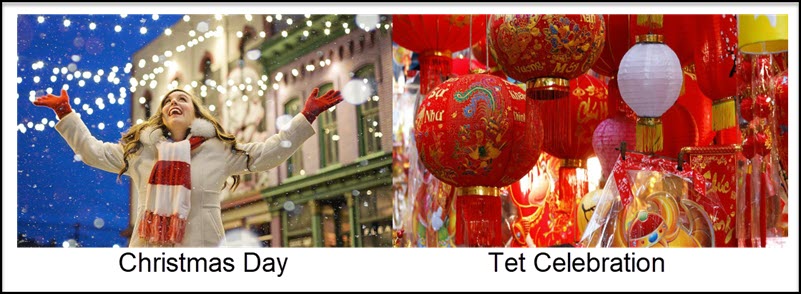
Festivals and celebrations
For Westerners, Christmas and New year is the most important holiday in a year. Most of the time, Westerners go on holiday vacations away from home just to spend the holiday with their loved ones. They would gather around, drink eat and be merry. Important occasions for Westerners are birthdays and weddings. During those special occasions that people reconnect and gather. For Birthdays, gifts are given to the celebrant and there is usually a birthday parties being held.
In Vietnamese culture, Lunar New year or Tet is the most important holiday in their country. Though the date to celebrate tet varies and can either be between months of January 15 and February 20th. Houses are decorated and during that time family members gather and celebrate the festival. Foods that are usually served during the Lunar New year includes dried fruits, and sticky rice cakes. Another important day that they celebrate is death days. During this time, ancestors are worshipped. Big meals are prepared and family members and relatives gather around and would normally share memories and stories about the dead. Although birthdays are also celebrated in Vietnam but parties are not usually held as grand as the new year and the death day.
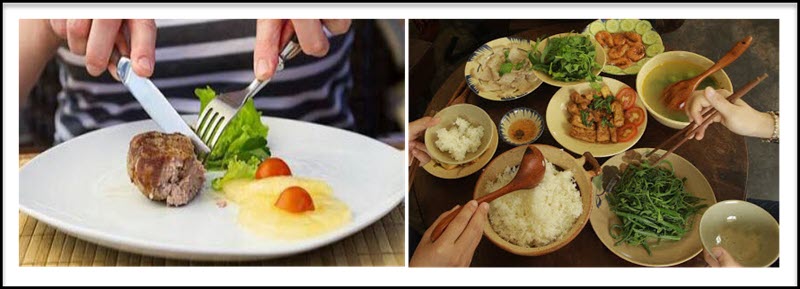
Eating and Drinking
For Westerners cuisine, they usually buy groceries in bulk and often buys them once a week because of their busy schedules. In terms of cooking their food they do not usually spend much time with it.
The meat is usually prepared and cooked in big servings but are usually sliced into portions during meal time. Westerners is not a fan of spicy foods, less spicy is acceptable though. The foods are usually shared equally among the family member but women eat the same amount with men in terms of quantity. When eating, the cooked food are usually placed in individual plates or if it is placed on the table it is usually pass around. Before eating, saying of “grace” has been practiced. The foods are eaten using utensils such as a knife, a spoon, fork and plates. Westerners are fond of using napkins during a meal.
For Vietnamese cuisine, cooking of foods takes a lot of time and buying of groceries are usually done everyday.
The meat in Vietnamese meals are cut into smaller servings before it is cooked since Vietnamese do not use knife during a meal. Vietnamese are fond of using spices that is why the smell of their food is so strong. The prepared foods are placed on the center of the table and each gets a piece of the food. For children, the parents usually gets the food for them. Vietnamese women relatively eat smaller amounts of foods while men eat tend to eat large amounts in terms of the quantity of food.
The utensils that are used for eating Vietnamese foods includes spoons, chopsticks and a bowl. Other dishes such as soups are usually consumed in a bowl. Before eating, the young ones must wait for the elders to eat first.
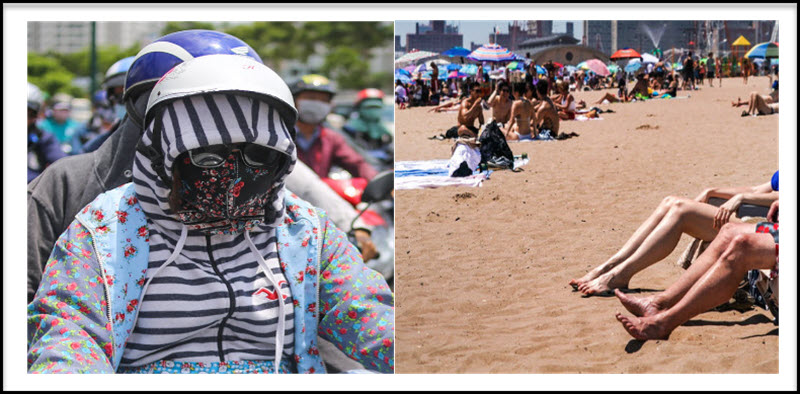
Sunlight
Western people loves the sun, as a matter of fact when the sun rises most of them tend to go out naked or even half naked so as to enjoy the sun rays. They love to get tanned.
In Vietnam, Vietnamese do not love the sun. They do not want to exposed to the sun for too long or even exposed for just a bit. In short, they do not want to get tanned at all. When the sun is out in Vietnam, you will see that Vietnamese are covered with clothing that is from head to toe. Most of the time, the eyes are the only part of the body exposed. For Vietnamese, the white the skin color the beautiful a person is. A tanned skin in Vietnam is considered by most people in the society as being ugly and could received criticisms from friends, and family.
Frequently Asked Questions (FAQs)
The westerners are individuals who is a native or a resident or was born in countries such as the United States of America, Canada, and Europe (western, northern and southern).
Speaking in loud tone of voices is considered to be rude in Vietnamese culture, more so if it a women is doing it. Vietnamese people should bow their heads to show respect and make sure not to look directly or make eye to eye contact.
Conclusion
Western people may eat their foods using forks and Vietnamese people eat using chopsticks, and each culture may have different ways of living but at the end of the day both culture share the same way of how reconnecting with families through social gatherings for a home cooked meal, each culture shares the same joy and shares smiles with each other. They even have the same important holiday, Lunar Year. Each culture are the same but also different in many ways.
When travelling to Vietnam (Ho Chi minh city is the largest city) and Western countries, one should know the country’s culture so that you can adjust and get accustomed to each culture. We hope that this guide has helped you understand the differences of the culture between Western and Vietnamese.
